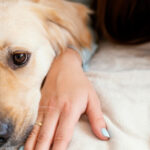How Strong Is Pitbull Dog Bite Force?
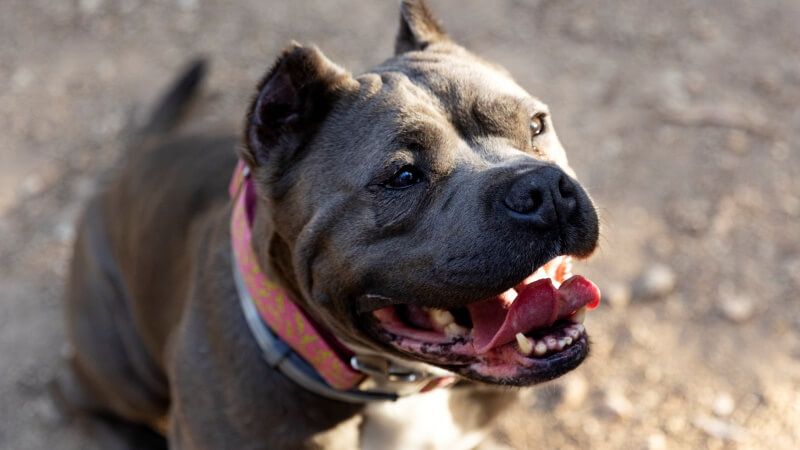
Pitbulls, renowned for their dog bite force, stand out as exceptionally joyful, playful, and smart canine breeds. Their endless energy and everlasting youthful spirit render them incredibly delightful companions.
From their exuberant greetings upon your arrival, their tender stares full of affection, to their comfort-seeking cuddles in your lap or the vigorous wagging of their tails, Pitbulls effortlessly communicate their adoration for you.
However, despite their loving nature, Pitbulls have been shadowed by a negative image, fueled by false beliefs regarding their temperament. Some argue that Pitbulls inherently exhibit aggression or dominate with an alpha demeanor, although there is no concrete evidence to support or debunk these claims.
Ever curious about the actual strength of a Pitbull’s bite? Let’s delve into the typical bite force of our cherished companions and demystify the reasons behind their misrepresented reputation.
How potent is a pitbull’s clamp?
Originating from a lineage of bulldogs and terriers, the American Pit Bull Terrier exhibits a bite force measuring 235 pounds per square inch (PSI), a stark contrast to the mere 120 pounds PSI of a human’s bite.
This formidable bite force of a pitbull, while noteworthy, aligns with the average for canines of similar size and weight categories. Moreover, it falls short when compared to the bite forces recorded for larger breeds in studies.
The creation of this bite force stems from the jaw’s adductor muscles along with the teeth, or the temporomandibular joints (TMJs), with a general dog bite force spanning between 230 to 250 psi.
For perspective, German Shepherds, praised for their bravery and protective nature, possess a bite force ranging approximately from 238 to 291 PSI.
The PSI measurement of a pitbull’s bite
The force of a dog’s bite is typically quantified in PSI, standing for Pounds Per Square Inch, which indicates the pressure applied over a one-square-inch area.
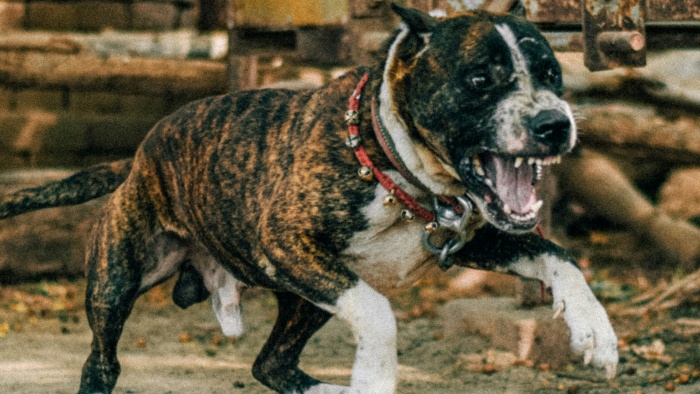
PSI, a unit also frequently applied in everyday situations like checking the air pressure in vehicle tires, serves to gauge the power behind a dog’s bite as well.
When comparing bite forces, dogs that surpass a pitbull include the Kangal with a bite force of 743 PSI, the Bandog at 730 PSI, the Cane Corso with 700 PSI, the Dogue de Bordeaux at 556 PSI, and the Tosa Inu also at 556 PSI.
Yet, the question arises: is the bite of a pitbull capable of breaking the bones of another dog or a human? Let’s explore this query.
Can a pitbull’s bite fracture bones?
Indeed, a medium-sized, well-muscled canine has the potential to harm the soft tissues of a human or another dog through biting.
For dogs of pitbull stature or larger, delivering a bite that could be life-threatening becomes somewhat easier. Nonetheless, such incidents rarely prove deadly unless the victim is a small child or an elderly individual.
The bite force exerted by a pitbull can fracture bones, particularly those that are smaller and more fragile, like the limbs, fingers, or hands of a child.
While the prospect of receiving a bite from a pit bull—or any dog for that matter—might be alarming, it shouldn’t deter anyone from enjoying the companionship of these cherished animals.
It’s crucial to remember that any dog might display aggression if it experiences abuse or neglect. The bite force of a pitbull is an aspect of the animal’s natural defense mechanism, utilized only when the dog feels threatened, provoked, or in pain.
Moreover, pitbulls are known for their affection towards children, displaying both protective and playful qualities. Therefore, if you’re considering adopting a pit bull, initiating obedience and socialization training from an early age is advisable.
Such training can ensure they grow up to be well-behaved, loyal, and affectionate pets. Employing positive reinforcement techniques is also beneficial.
To prevent turning a peaceful walk with your dog into a struggle, consider using a premium anti-pull Y harness designed for pitbulls. This harness is favored by pet owners for its ability to gently manage the dog.
Why is pit bull reputation for aggression?
The negative perception of pit bulls stems from their origins, where they were initially bred for the violent sports of bull-baiting and later, dog fighting. Originating from Old English Bulldogs in the early 19th century in the UK, these dogs were integral to the gruesome spectacle of bullbaiting.
This cruel sport entailed a bulldog engaging in combat with a bull, often leading to severe injuries or death, for the purpose of public amusement. The practice was eventually outlawed in 1835 by the British Parliament, which banned the baiting of certain animals such as bulls and bears.
The cessation of bullbaiting led to the rise of “ratting,” a new form of entertainment that involved dogs competing to kill rats, giving rise to the term “Pit” Bull. It wasn’t until after World War II that pit bulls began to be recognized more as household pets than participants in blood sports.
How to disengage a pitbull’s bite
Typically, when dogs encounter a dispute with another dog or a human, their biting pattern involves multiple quick bites and releases. Pitbulls, however, exhibit distinct behavior by biting and maintaining their hold.
In situations where your dog has latched onto something, or worse, another dog or person, using a large volume of water from a bucket or hose can be effective in compelling them to let go.
Another strategy involves lifting the dog by its back legs, disrupting its balance and gravitational center. It’s crucial to avoid forcibly separating the dogs by pulling them apart, as this could exacerbate the injury.
Employing a break stick or twisting the dog’s collar can also persuade it to release its bite. Specifically designed for pitbulls, a break stick is inserted into the dog’s mouth to pry open the jaws and free its grip. This action instinctively causes the dog to release whatever it is holding.
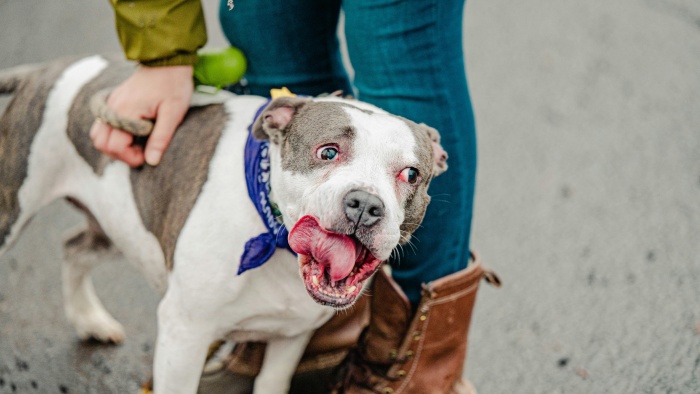
Additionally, pulling the dog’s tail backwards is an effective method to make it let go. If attacked, pushing further into the pitbull’s mouth with your hand or leg, rather than pulling away, can help in freeing yourself.
However, it’s vital to remember that pit bulls are not inherently dangerous. A dog’s bite is usually a response to a specific provocation.
Pitbulls that are well-trained are known to be affectionate, energetic, loyal, and kind. Therefore, the actions of a few negligent owners should not dissuade anyone from appreciating these dogs.
For families with children, it’s important to educate them on the proper way to interact with pit bulls and animals in general.
Do pit bulls have a locking jaw mechanism?
No, pit bulls do not have a jaw mechanism that “locks” during a bite. This characteristic is a common misconception and has been debunked through research comparing various dog breeds. Their jaws function similarly to those of other dogs.
What sets pit bulls apart is not a mechanical lock but rather their remarkable determination, strength, and tenacity. It is their strong will that enables them to maintain a bite longer than some other breeds might.
The term “locking jaw” should not be confused with “lockjaw,” a distinct medical issue. While a locking jaw suggests a dog’s persistent grip, lockjaw refers to a rare health condition potentially stemming from illnesses, neurological disorders, or tetanus.
Dogs suffering from lockjaw struggle with opening or closing their mouth fully, making tasks like picking up a ball or yawning challenging due to limited mouth movement.
Owners of dogs experiencing jaw issues should consult a veterinarian for proper diagnosis and treatment. A vet might recommend blood tests to identify any bacterial infection in the bloodstream. In severe cases, the dog might require hospitalization to assist with feeding and care.
How to prevent a pitbull from snapping
Ensuring your dog doesn’t resort to biting is crucial, given that even the friendliest canine might snap under stress or discomfort.
You have the power to curb biting tendencies in your pitbull. Effective training from the owner stands as a pivotal measure in averting potential bites.
To further deter or mitigate biting behaviors in pitbulls, consider the following strategies:
- Commence training early, ideally when they are puppies or younger than six months, employing a firm yet gentle nudge on the neck to signal that biting is not tolerated.
- Encourage the use of chewing toys, treats, and specific sticks designed for pitbulls as suitable alternatives for their chewing urges.
- Socialization is key. Expose your pitbull to diverse groups of people, including those with disabilities, children, and the elderly, in serene and positive settings.
- Stay vigilant and attuned to your dog’s demeanor, stepping in to defuse potentially aggressive situations before they escalate.
- Acclimatize your pitbull to various stimuli such as loud sounds, bikes, and heavy machinery in a manner that remains overwhelmingly positive.
- Avoid resorting to harsh or violent punishments. Opt instead for positive reinforcement methods like treats, playtime with favored toys, verbal praise, and affection to commend desirable behavior.
- Ensure your pitbull’s vaccinations are up to date and maintain regular veterinary check-ups to minimize the chances of disease transmission or mitigate the impact of diseases.
- Promote mental stimulation by engaging your pitbull in activities that challenge their mind, such as puzzle toys or obedience games, to prevent boredom and reduce the likelihood of biting out of frustration.
How to avoid jaw damage in canines
Jaw injuries in canines typically stem from two primary sources: trauma, such as being hit by cars or fights with other dogs, and dental diseases.
Thus, to safeguard your dog from jaw injuries, addressing these common causes is crucial. Below are strategies to prevent dog conflicts:
- Sterilize your canine companion;
- Steer clear of dog parks if your pitbull shows signs of territorial behavior;
- Serve meals to dogs in separate areas;
- Always use a leash during walks;
- Ensure each dog has time alone;
- When introducing a new dog, opt for one of the opposite sexes for your current pet; and;
- It’s important to remember not to physically intervene in dog altercations. Interposing your body can result in injuries, as dogs can act on instinct and aggression.
Additionally, jaw fractures can occur from falls from significant heights or slips on slick surfaces.
To mitigate these risks, consider these precautions:
- Regularly trim your dog’s nails to enhance traction, and attend to any paw pad issues;
- Employ ramps for access to furniture or vehicles, encouraging use with patience and possibly treats for positive reinforcement.
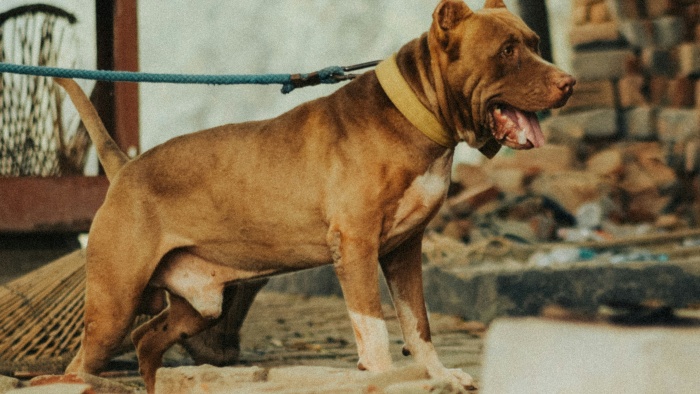
Education for canines is vital for your pitbull’s happiness
Pit bulls inherit the muscular build from their bulldog ancestors and the tenacity and agility from the terrier lineage. It’s crucial for owners to channel these traits positively.
For instance, given their impressive leaping abilities, consider setting up an obstacle at home for them to jump over, or enroll them in an agility course.
Assign tasks to harness their natural determination. Remember, they are robust animals who benefit from regular physical activity, such as carrying a backpack during walks.
As the guardian of a pit bull, it’s your duty to ensure they are well-mannered in social settings. Doing so helps to challenge and change the widespread negative views about their breed.
Final thoughts
Pitbulls radiate immense joy, playfulness, bravery, loyalty, and affection, making them exceptional companions for humans.
Becoming a pit bull owner transforms your life, filling it with unwavering support and companionship. These dogs dedicate themselves entirely to their families.
Understanding their dog bite force is not about fear but recognizing their physical capabilities. This knowledge underscores the importance of responsible ownership and training.
Committing to proper training is not just about avoiding negative situations; it’s a valuable investment in your dog’s well-being and future.
FAQs
What makes pitbulls such unique and lovable pets?
Pitbulls are celebrated for their unparalleled enthusiasm, loyalty, and affectionate nature towards humans. Their blend of strength and playfulness, inherited from both bulldog and terrier ancestors, makes them not just pets but devoted companions. Their ability to form strong bonds with their owners means they’re always there to offer support and love.
How can I effectively train my pitbull to prevent biting?
Effective training of a pitbull involves early socialization, positive reinforcement, and introducing them to a variety of people and situations in a calm and controlled manner. Training should start at a young age, focusing on discouraging biting through gentle correction and offering suitable alternatives like chewing toys for their biting urges.
Are pitbulls naturally aggressive dogs?
No, pitbulls are not inherently aggressive. The misconception of their aggression stems from historical misuse of dog fighting and bull-baiting. With proper training, socialization, and care, pitbulls are known to be exceptionally loving, gentle, and loyal to their families, often going to great lengths to protect and please their owners.
What steps can I take to prevent my pitbull from developing jaw problems?
Preventing jaw problems in pitbulls involves safeguarding them from situations that could lead to trauma, such as fights with other dogs or accidents. Regular dental care and avoiding hard surfaces that might cause slips or falls are also crucial. Additionally, providing ramps for climbing and maintaining their nails can help reduce the risk of injuries that could lead to jaw issues.
How can understanding a pitbull’s bite force impact how I care for my pet?
Understanding the significant bite force of a pitbull highlights the importance of responsible pet ownership, including comprehensive training and socialization. Recognizing their physical capabilities allows owners to better prepare and prevent situations that could lead to biting, ensuring the safety and well-being of both the dog and those around it.

